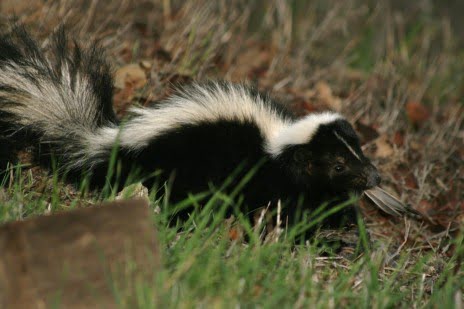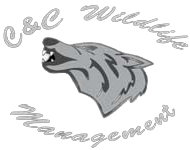SKUNKS
Skunks are nocturnal, and are solitary animals when not breeding, though they may gather together to keep warm in communal dens in the coldest part of their range. During the day, they shelter in burrows that they dig with their powerful front claws, or in other man-made or natural hollows . Both sexes occupy overlapping home ranges through the greater part of the year; typically 2 to 4 km² for females, up to 20 km² for males.
Unlike the fictional “Flower” in the movie Bambi, real skunks don’t hibernate in the winter. However, they do remain generally inactive and feed rarely. They often overwinter in a huddle of one male and multiple (as many as twelve) females. The same winter den is often repeatedly used.
Although they have excellent senses of smell and hearing – vital attributes in a nocturnal carnivore – they have poor vision. They cannot see objects more than about 3 meters away with any clarity, which makes them very vulnerable to road traffic. Roughly half of all skunk deaths are caused by humans, as roadkill, or as a result of shooting and poisoning. They are short-lived animals: fewer than 10% survive for longer than three years.
Breeding usually takes place in early Spring. Female skunks are induced ovulators, the male skunk mounts the female from behind and proceeds to bite the female on the back of the neck and back, which induces the female’s ovulation. Females excavate a den ready for between one and four young to be born in May. The male plays no part in raising the young and may even kill them. A common scene in late spring and summer is a mother skunk followed by a line of her kits. By late July or early August the young disperse. When the young skunks meet again, they raise their tails vertically. After a little posturing they start to rub against each other, often rolling around in what appears to be an embrace. Older skunks seem less friendly to the young kits.

